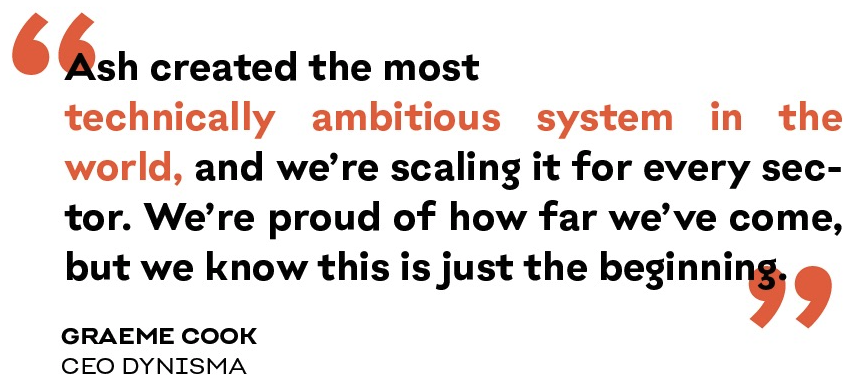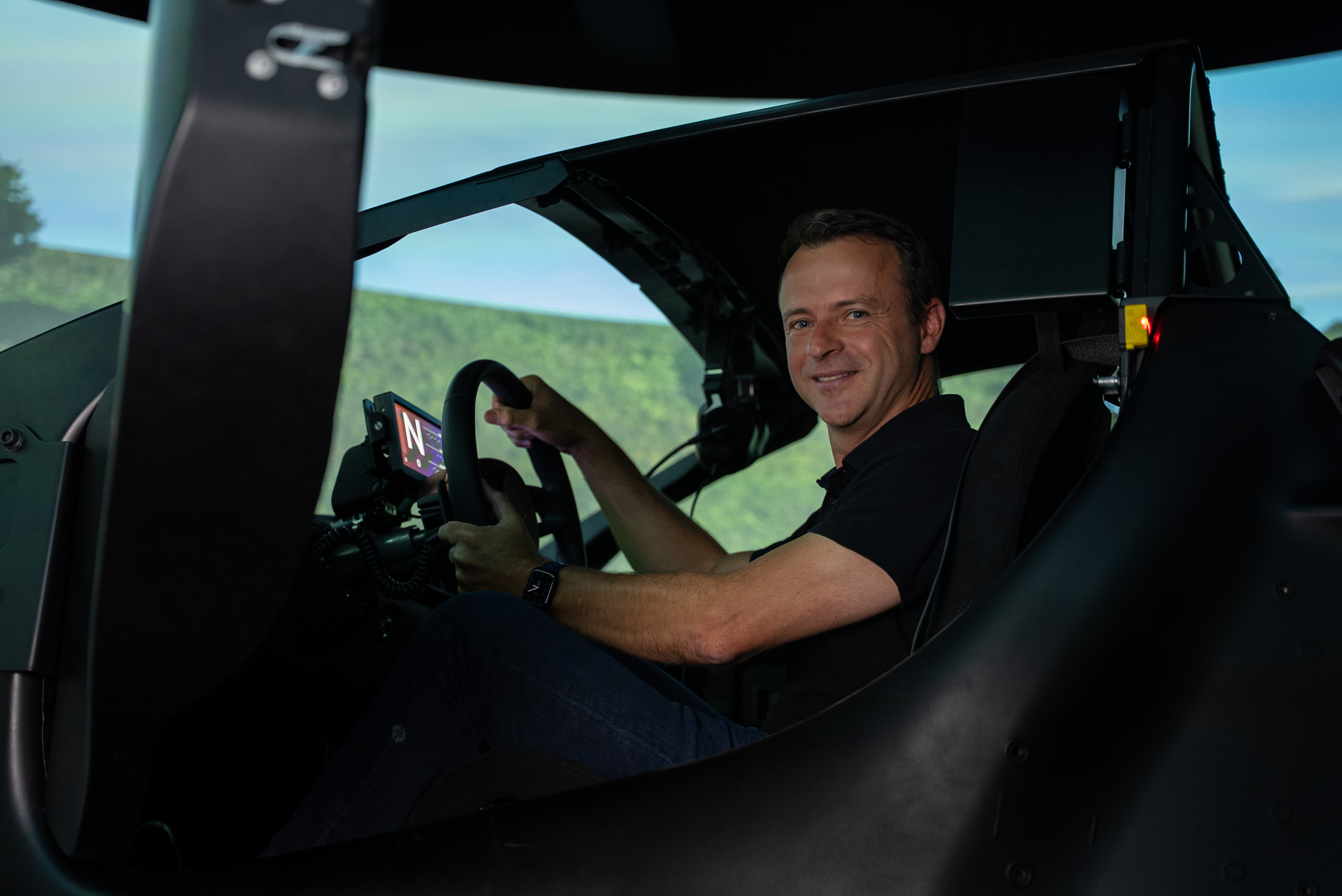You’ve gone from working with Lewis Hamilton, Jenson Button, Sebastian Vettel, and Kimi Räikkönen to building your first simulator prototype at home. What drove you to start Dynisma?
Ash: It was frustrating, really. I was leading simulator programmes at McLaren and Ferrari, working with some of the best drivers in the world, and I kept hitting the same wall: motion systems just weren’t good enough. The tech didn’t feel real. Traditional hexapod-based systems had motion latency anywhere between 20 to 50 milliseconds, and when you consider a professional driver’s reaction time is around 100 milliseconds, that latency adds up fast. If a motion platform adds 50% to a driver’s reaction time, it’s no longer a useful or accurate tool. I knew there had to be a better way.
What did that prototype actually look like?
Ash: It was built from first principles engineering using belts, bungee cords, servo motors, and an Arduino kit. It worked. It proved that you could achieve high bandwidth and ultra-low latency motion with the right mechanical design and control logic. That prototype was the foundation for Dynisma's technology, and from the start, our vision has been clear: to level the playing field and bring high-performance simulation to every race team and OEM. And our purpose? To democratise access to world-class simulation so that speed, accuracy and realism are available to all.
So, what’s different about Dynisma’s simulators?
Ash: In simple terms: they respond faster and feel more real. Our latency is down to 2–5 milliseconds. The bandwidth from primary motion is in excess of 100Hz, delivering more information to the driver. But it’s not just about the numbers, it’s about what drivers feel. Simulation is about tricking every sense and a driver’s vestibular system into thinking they are driving a real vehicle. If the car goes over a kerb, you feel it. If the rear slides, you can correct it. We built motion systems that give the right feedback, instantly. That’s what changes how teams develop cars.
Who's using your technology now?
We started in motorsport, and we now supply teams across F1, F2, Formula E, WEC, and IndyCar. But the big growth is in automotive. OEMs are realising that to keep up with electrification, autonomy, and ever-shorter development cycles, they need better simulation. We’re helping them validate cars earlier, with fewer prototypes, more accurate data, and a complete digital twin of the vehicle. We’re also proud to be the official motion simulator partner of McLaren Automotive, who use our technology to virtually develop vehicle dynamics, aerodynamics, NVH, HMI, propulsion and control systems ahead of real-world testing. The simulator is being used extensively in the development of their highly anticipated W1 car.
What role does driving simulation play in sustainability?
Ash: A huge one. In automotive, every physical prototype you can replace with a virtual model saves time, materials, and emissions. Our simulators let OEMs validate ride, handling, EV systems, and safety features earlier, cutting the need for multiple prototypes and reducing the travel-heavy demands of global testing programmes. The same applies in motorsport - one group completes over 250,000 simulator miles per year across their racing series, saving £0.4M in fuel, £8M in tyres, £1.2M in crash repairs, and 450 tonnes of CO2 annually. Real-world testing at Barcelona emits nearly 5kg of CO2 per lap. In our simulator? Just 0.1kg. That’s a 98% reduction, with no tyre wear, no travel, and no crash damage. For both OEMs and race teams, it’s a way to hit ESG goals without slowing development.
Dynisma's grown rapidly. What does leadership look like for you now?
Ash: For me, it’s still all about motion. I'm obsessed with the detail, especially around latency, correlation, and speed of response. But as CTO, I now get to lead on the innovation while our CEO Graeme Cook focuses on scaling the business as demand continues to grow. Speed is the throughline, speed of latency, speed of innovation, and helping OEMs with speed to market.
What’s next for you and your team?
Ash: We’re scaling fast. We’ve productised the technology, made it more accessible, and we’re expanding into new sectors, defence, gaming, aerospace, even marine. But we’re staying focused on feel. If it doesn’t feel right, it’s not right. That’s the benchmark.
And finally, what do you hope the future of mobility feels like?
Ash: Real. Correlated. Accurate. I see a future where every simulator is powered by DMG technology, levelling the playing field with universal access to high-performance, high-fidelity motion simulation. And our purpose is to democratise high-performance motion simulation so every race team can access F1-grade technology, and every OEM can accelerate development and stay competitive in a fast-moving global market.


Photo Copyright: Dynisma Ltd.
Secure your MOTION MAG copy online now to read the full Arcticle on Dynisma Ltd.: EDITION SIX.


